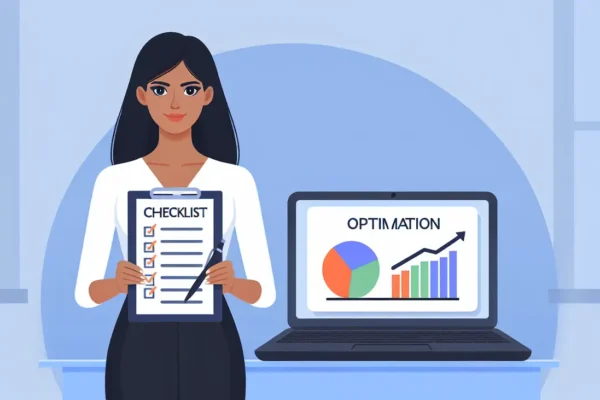Debt collection is an important aspect of financial management, but it can vary significantly depending on whether it’s for businesses (B2B) or individual consumers. In this blog, we will explore the key differences between B2B and consumer debt collection, helping you understand the unique approaches required for each.
What is B2B Debt Collection?
B2B debt collection involves pursuing payments from businesses that owe money for products or services provided by another business. This process typically requires a formal and professional approach, focusing on maintaining business relationships.
In a B2B context, the collections process is more intricate. Businesses must navigate formal agreements and contracts while maintaining a professional relationship. The goal is often not just to recover the debt but to sustain a long-term business relationship. This means communication tends to be more structured and less aggressive compared to consumer debt collection.
B2B transactions often involve larger sums and longer credit terms, necessitating a detailed focus on negotiation, payment plans, and sometimes legal action for recovery. The complexity increases as various departments like accounts payable and receivable handle different aspects of the process, underscoring the importance of a coordinated effort.
When dealing with B2B debt collection, it is crucial to understand the debtor’s business operations and financial health. This insight helps in customising recovery strategies that can range from extensions and restructurings to more stern legal actions. The emphasis is on finding a feasible solution that works for both parties.
What is Consumer Debt Collection?
Consumer debt collection refers to recovering unpaid debts from individual consumers. This process often involves stricter regulations and a more empathetic approach, given that it deals with individuals who may be facing financial difficulties.
Unlike B2B debt collection, consumer debt collection is heavily regulated by organisations such as the Financial Conduct Authority (FCA). The regulator is in place to protect consumers from aggressive collection tactics and ensure that communications are conducted respectfully and within specified times.
The collections process in a B2C setting is usually shorter and simpler. The amounts involved are typically smaller, and the credit terms are shorter. If consumers fail to make payments, companies often resort to methods such as account terminations, repossession of products, or engaging consumer debt collection agencies.
One notable aspect of consumer debt collection is the emotional factor; collectors need to be empathetic and understanding, as financial difficulties can be personal and sensitive for individuals. Thus, the approach is often less formal and more compassionate to encourage repayment without causing undue stress.
Key Differences in Regulations
B2B debt collection is often governed by commercial laws and contracts, while consumer debt collection is regulated by rules and guidelines issued by the FCA which provide protections for consumers.
These rules and guidance outline what must be followed when collecting consumer debts, including restrictions on calling hours, prohibition of harassment, and clear disclosure of the collector’s identity. These regulations ensure a level of protection and fairness for consumers.
B2B debt collection, on the other hand, operates within the framework of commercial contracts and agreements. Although less regulated, these collections must still adhere to the principles of fair business practices and often involve negotiation and mediation to resolve disputes amicably.
Approaches to Communication
In B2B debt collection, communication is usually more formal and focuses on business agreements. In contrast, consumer debt collection requires a more personal and empathetic touch, acknowledging the individual’s situation.
Effective communication in B2B collections emphasises clarity and professionalism. Letters, emails, and calls are typically structured to reflect the importance of the business relationship and the mutual benefits of resolving the debt issue. Documentation of all interactions is critical to maintain a clear record and ensure that all parties are on the same page.
In consumer debt collection, the approach must be more sensitive and accommodating. Collectors often need to explain the debt situation clearly and provide support options such as payment plans or financial counseling. This approach helps build trust and encourages compliance, reducing the likelihood of disputes.
Impact on Relationships
Maintaining a positive relationship is crucial in B2B collections, as businesses may continue to work together in the future. Consumer collections emphasise respectful treatment to avoid complaints and legal issues.
In B2B scenarios, a well-handled debt collection process can strengthen the relationship between businesses. For instance, offering flexible repayment options or understanding the debtor’s circumstances can improve goodwill and ensure continued business dealings.
For consumer debt collection, the key is to be respectful and understanding. Aggressive tactics can lead to complaints and potential legal troubles, which can tarnish the company’s reputation. Ensuring that consumers feel heard and treated fairly can lead to positive outcomes and even improve customer loyalty in the long run.
Methods of Debt Recovery
B2B collections might involve negotiations, payment plans, or legal actions based on commercial laws. Consumer debt collection often utilises debt collectors, payment plans, and must adhere to consumer protection regulations.
In B2B debt recovery, strategies may include extended payment terms, restructuring of the debt, or taking legal action if negotiations fail. Employing professional debt recovery agencies that specialise in B2B collections can also be an effective approach, ensuring that all efforts are compliant with commercial regulations.
Consumer debt recovery often starts with reminders and follow-up communications. If these efforts fail, companies may engage third-party collection agencies. These agencies must operate within the bounds of regulations like the FDCPA, ensuring ethical and fair treatment of the consumers while recovering the debts.
Both B2B and consumer debt recovery require strategic planning and tailored approaches to be effective. Understanding the debtor’s context and using appropriate communication and negotiation tactics can significantly improve the chances of successful collection without damaging relationships.
Final Thoughts
Understanding the differences between B2B and consumer debt collection is essential for effectively managing and recovering debts. While both processes aim to collect unpaid debts, the strategies, regulations, and communications required can differ greatly. By tailoring your approach to the type of debtor and keeping these distinctions in mind, you can improve your chances of successful debt recovery.







